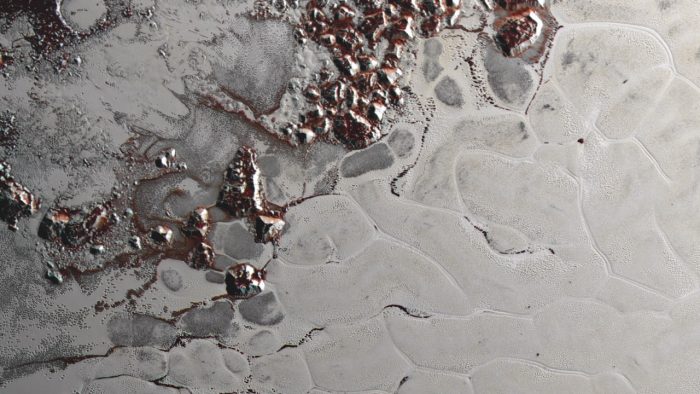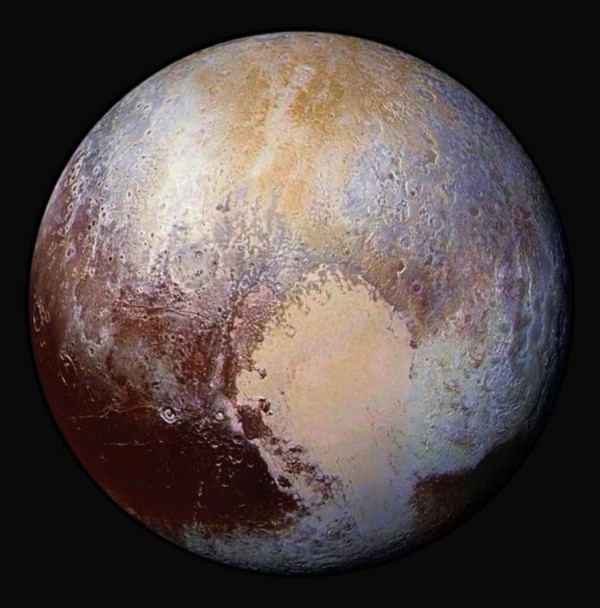
NASA said on June 1, 2016 that team members with the New Horizons space mission – which visited Pluto in July, 2015 – have determined the depth of a layer of solid nitrogen ice within Pluto’s distinctive “heart” feature. This large heart-shaped plain on Pluto is informally known as Sputnik Planum. New Horizons scientists say it’s being constantly being renewed by a process called convection, which brings fresh material up from below, replacing older surface ices with fresher material. Mission scientists used state-of-the-art computer simulations to show that the surface of Sputnik Planum is covered with icy, churning, convective “cells” 10 to 30 miles (16 to 48 km) across, and less than a million years old. The study is published in the June 2, 2016 issue of the journal Nature.
A statement from New Horizons mission scientists said:
The findings offer additional insight into the unusual and highly active geology on Pluto and, perhaps, other bodies like it on the outskirts of the solar system.
William B. McKinnon, from Washington University in St. Louis, is the co-investigator on the New Horizons science team. He also led this study. He said:
We found evidence that even on a distant cold planet billions of miles from Earth, there is sufficient energy for vigorous geological activity, as long as you have ‘the right stuff,’ meaning something as soft and pliable as solid nitrogen.
These scientists believe that Pluto’s solid nitrogen is warmed by this world’s modest internal heat. They compared the icy “cells” coming up to the surface of Sputnik Planum with a lava lamp, saying the solid nitrogen ice:
…becomes buoyant and rises up in great blobs … before cooling off and sinking again to renew the cycle. The computer models show that ice need only be a few miles deep for this process to occur, and that the convection cells are very broad. The models also show that these blobs of overturning solid nitrogen can slowly evolve and merge over millions of years.
The team said these convective surface motions on Pluto average only a few centimeters a year – about as fast as your fingernails grow – which means cells recycle their surfaces every 500,000 years or so. Their statement explained:
While slow on human clocks, it’s a fast clip on geological timescales.
McKinnon added:
This activity probably helps support Pluto’s atmosphere by continually refreshing the surface of ‘the heart.’
It wouldn’t surprise us to see this process on other dwarf planets in the Kuiper Belt. Hopefully, we’ll get a chance to find out someday with future exploration missions there.
The New Horizons spacecraft is on course for an ultra-close flyby of another Kuiper Belt object, 2014 MU69, on Jan. 1, 2019, pending NASA approval of funding for an extended mission.

Bottom line: Scientists with NASA’s New Horizons mission used state-of-the-art computer simulations to show that the surface of Pluto’s heart-shaped Sputnik Planum region is covered with churning ice “cells.” These icy cells are geologically young, less than a million years old.











